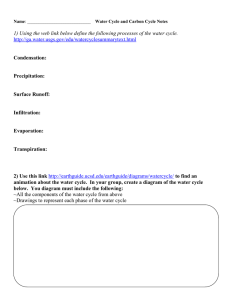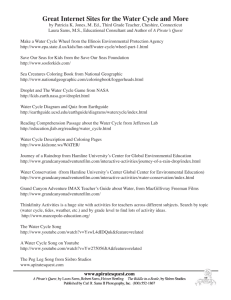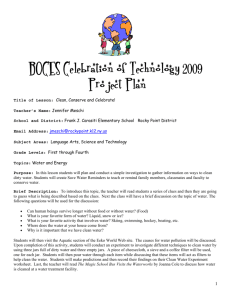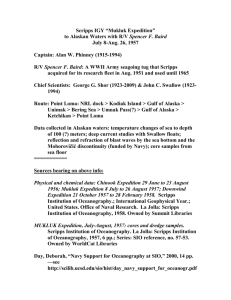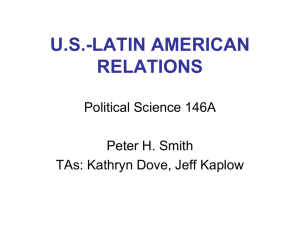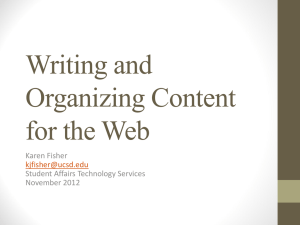The Water Cycle
advertisement
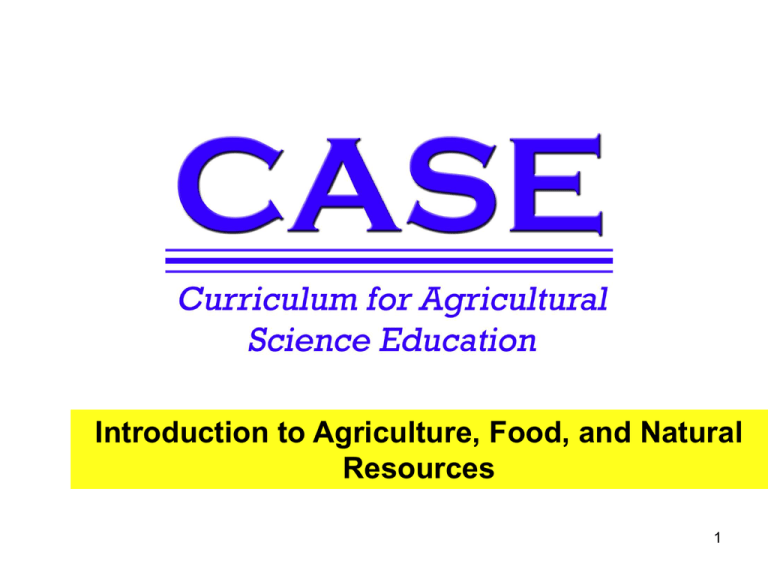
Introduction to Agriculture, Food, and Natural Resources 1 Introduction to Agriculture, Food, and Natural Resources The Water Cycle Unit 3 – Lesson 3.5 Water World 2 Importance of Water • Covers 70% of Earth • Sustains all life processes • Used for many purposes – – – – – – Agriculture Industry and processing Hydroelectric plants Fish and wildlife Recreation Domestic use such as bathing, cleaning, yard irrigation 3 Where Water is Found •Atmosphere •Precipitation •Organisms •Earth’s surface •Groundwater 4 Scripps Institution of Oceanography. (2010). Water cycle diagram. Retrieved from http://earthguide.ucsd.edu/earthguide/diagrams/watercycle/ Water Changing Processes 5 Scripps Institution of Oceanography. (2010). Water cycle diagram. Retrieved from http://earthguide.ucsd.edu/earthguide/diagrams/watercycle/ Water Changing Processes • Melting – change from solid to liquid • Freezing – change from liquid to solid • Evaporation – change from liquid to gas 6 Water Changing Processes • Condensation – change from gas to liquid • Transpiration – water vapor produced by plants • Percolation and infiltration – movement of water through earth materials 7 Movement of Water 8 Scripps Institution of Oceanography. (2010). Water cycle diagram. Retrieved from http://earthguide.ucsd.edu/earthguide/diagrams/watercycle/ References Camp, W.G., & Heath-Camp, B. (2009). Managing our natural resources (5th ed.). Clifton Park, NY: Delmar. Scripps Institution of Oceanography. (2010). Water cycle diagram. Retrieved from http://earthguide.ucsd.edu/earthguide/diag rams/watercycle/ 9
